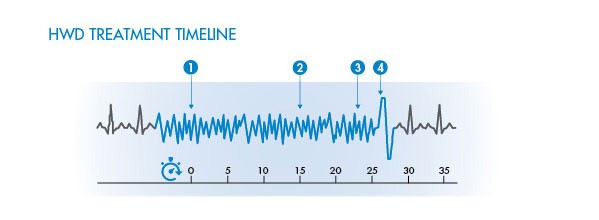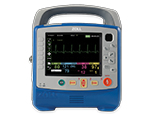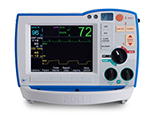How the HWD Works
The Hospital Wearable Defibrillator (HWD) is a tool for managing patients at risk of sudden cardiac death. It aims to provide patients with extra protection as well as peace of mind.
Unlike an implantable cardioverter defibrillator (ICD) that is implanted in the chest, the HWD is worn outside the body. It is designed to continuously monitor a patient's heart using adhesive electrodes.
Building on Wearable Defibrillator Technology
The HWD utilizes the same detection algorithm and defibrillation waveform as the LifeVest® wearable defibrillator. LifeVest is worn by outpatients and is designed to detect life-threatening rapid heart rhythms and automatically deliver a lifesaving treatment shock.
Every Minute Matters
The nature of cardiac arrests coupled with the limitations of traditional resuscitation protocols makes treating sudden cardiac arrest challenging. With each minute that passes after the start of cardiac arrest, the chance of survival decreases by 10%.1
Streamlined automatic detection and treatment are critical to patient survival. Designed to provide continuous monitoring, rapid detection, and automatic treatment for certain life-threatening rapid arrhythmias, the HWD can deliver timely defibrillation, complementing a hospital's resuscitation protocol.
In a typical situation, the entire event, from detecting VT/VF to delivering a treatment shock, occurs in about one minute.

|
1. Arrhythmia detected, siren alert activated |
If the arrhythmia continues after the first treatment shock, the sequence repeats. Multiple shocks may be given. The entire event (arrhythmia detection to treatment shock) typically occurs in less than one minute. |
The Hospital Wearable Defibrillator is currently available in Singapore, Malaysia, and Thailand. Please contact your local ZOLL representative for more information.
1 Larsen MP, et al. Ann Emerg Med. 1993;22: 1652–58.


